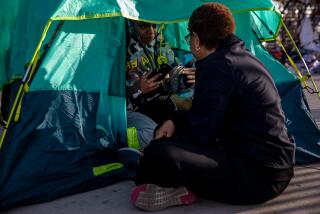Column: An L.A. homeless camp, a Rick Caruso sign and the tough choices ahead
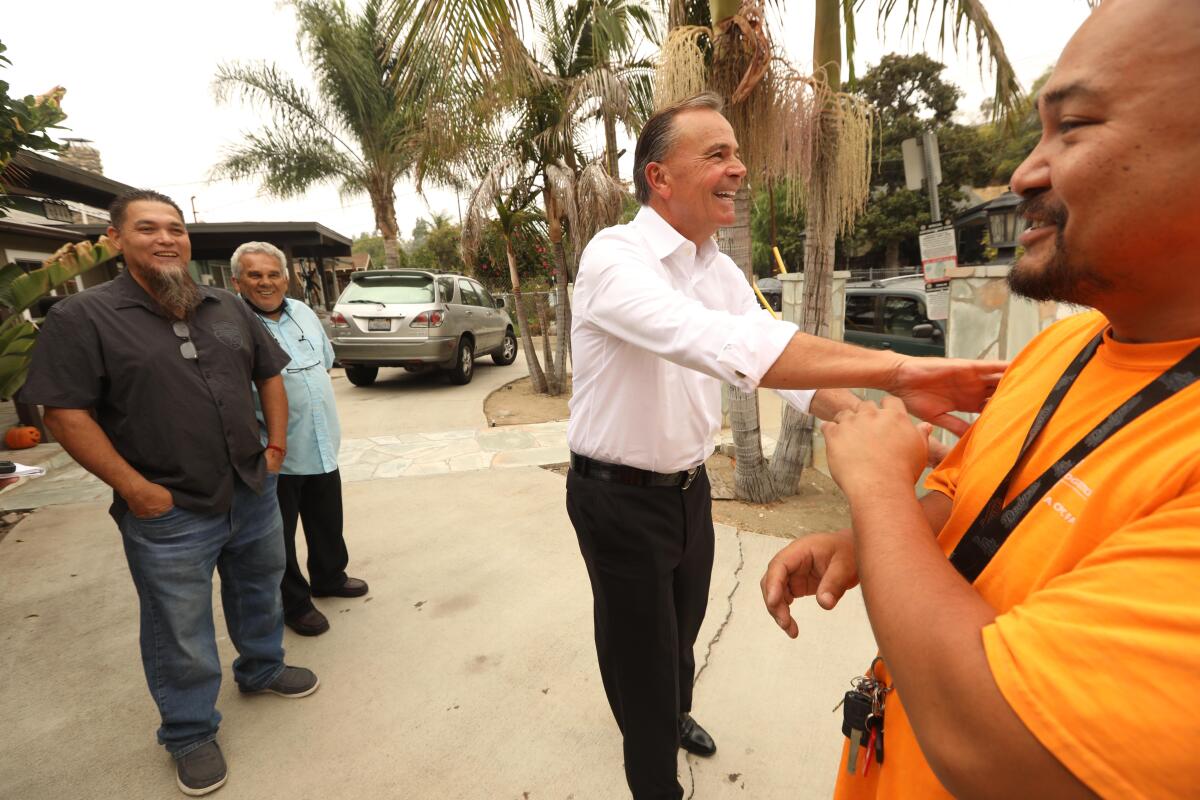
About 800 feet from the front door of Arturo Prieto’s home in Highland Park, a blue tent sits at the center of a campsite that’s been there for years.
Roughly an equal distance from Prieto’s backyard is a tiny home village that’s been in operation for about a year.
And on Prieto’s fence, facing the onramp to the Arroyo Seco Parkway, is a Caruso for mayor sign.
One day not long ago, after I spent some time with Rep. Karen Bass and heard her recipe for homelessness — better leadership, smarter alignment of services, and much cheaper housing that’s built faster, etc. — I knocked on Prieto’s door.
He told me homelessness is his top issue, and he thinks Rick Caruso is the one who can do something about it. It wasn’t about the specifics for Prieto; it was his sense that Caruso’s “strong personality” makes him more likely to get things done.
“I want to help the homeless,” Prieto said. “It’s not humane to see people living on the streets. But if you offer them help and they don’t want to help themselves, what do you do then?”
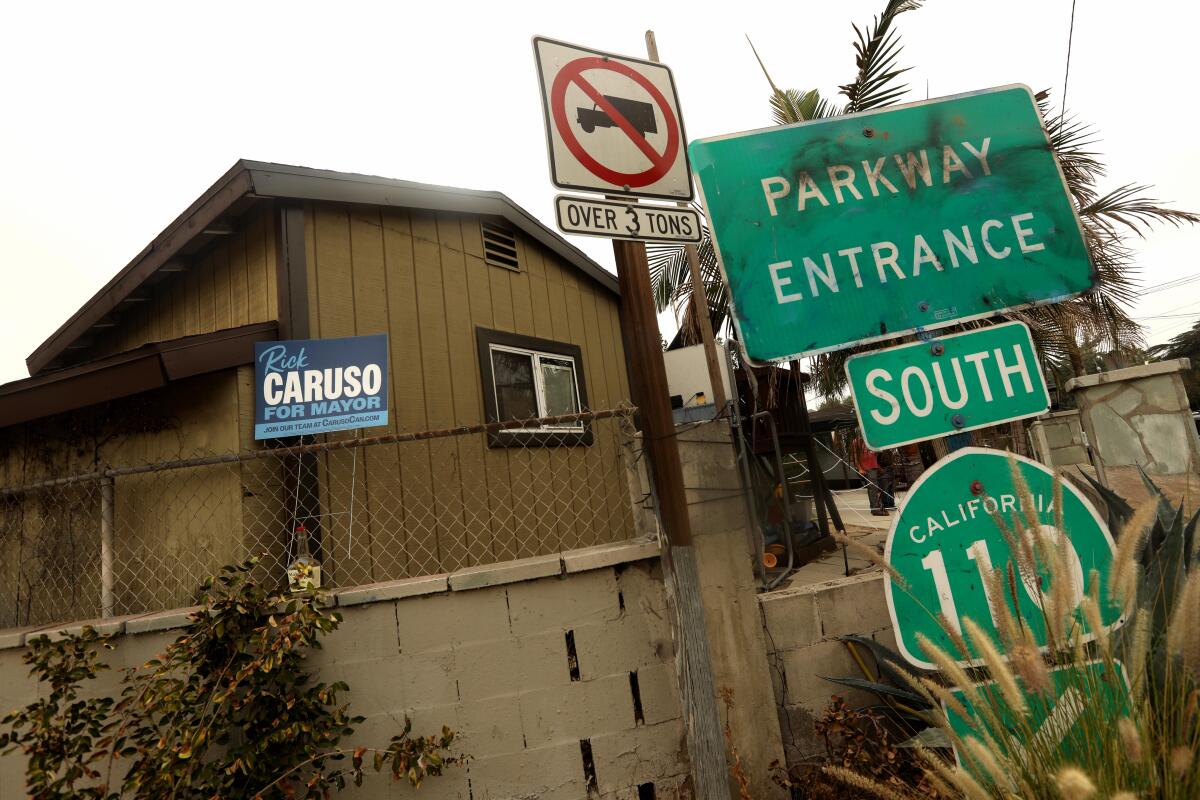
Prieto didn’t have an answer, but as a carpenter who’s married to a public school teacher, he wants a better return on his tax dollars. He said drug use and property crimes are more prevalent since the tiny home village opened in the park where he taught his kids — 6 and 11 — how to ride bikes. And he said his daughter recently asked him why a man near their yard was naked.
I asked Prieto whether he’d be interested in talking to Caruso about the candidate’s plan on homelessness, and he said sure. So I reached out to Caruso, who said he’d gladly stop by.
On Friday afternoon, the mall developer stepped out of a black SUV and shook the hand of Prieto and his next-door neighbor, Felipe Rabre, a retired floor installer. Geraldine Rodriguez, a payroll officer, and her husband, Roberto, a truck driver, later wandered over from across the street to join the conversation. Brian Aguilar, who lives down the street, briefly showed up much later.
Prieto and Rabre had already decided to vote for Caruso. Geraldine Rodriguez told me she and her husband were still mulling it over, and after several minutes of pleasantries in a yard decorated for Halloween, they and the others listened intently as Caruso got to his plan and what he’d learned from homeless service organizations he’s studied.
“You’ve got to meet them where they are, you know? You don’t judge them,” Caruso said. “But you’ve got to get them off the streets.”
“I totally agree,” Prieto said.
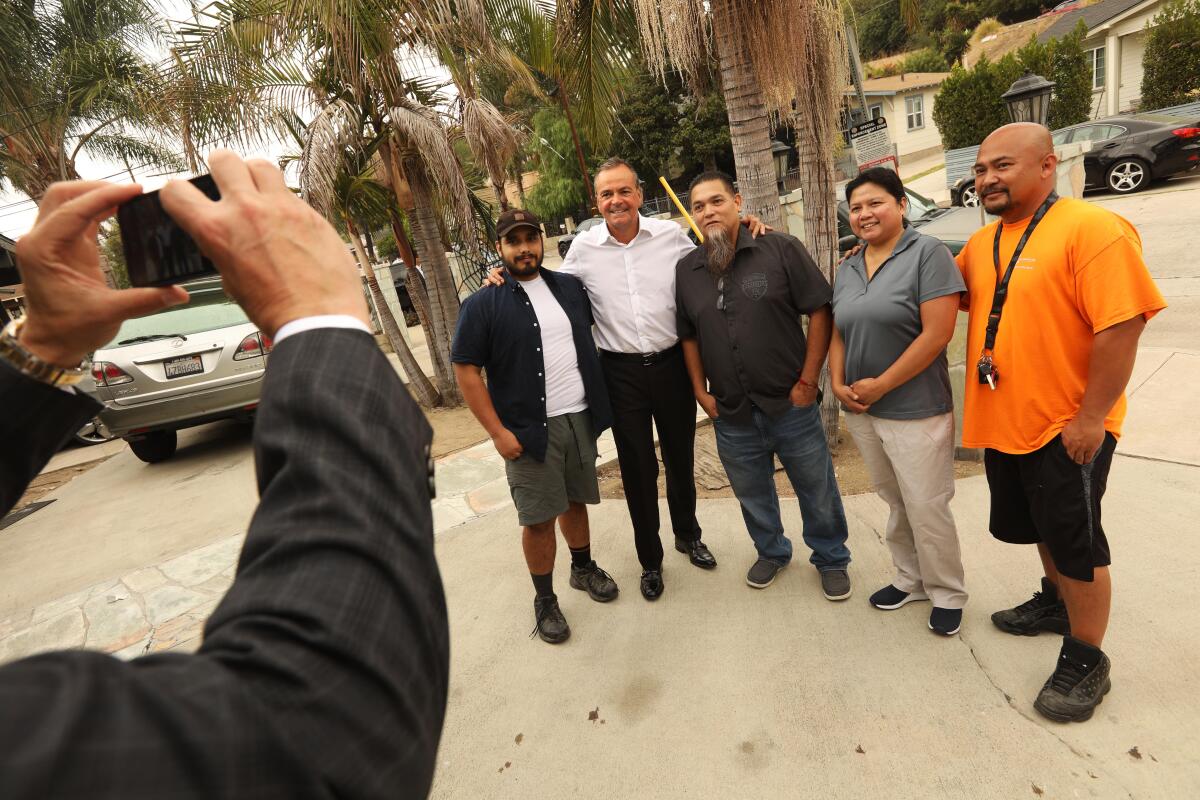
“Yeah, so my plan is, we’re going to build 30,000 beds,” Caruso said, adding that there shouldn’t be any encampments in the city. “It’s not, frankly, it’s not fair to them, and it’s certainly not fair to you and your families.”
One solution, Caruso said, is to prevent homelessness by boosting the local economy rather than impeding it with cumbersome bureaucracy that makes it particularly hard for small businesses to survive. He said there should be more apprenticeship programs in trades like carpentry, and he also said he’d keep entertainment industry jobs in Los Angeles.
I circled back to the 30,000 beds, because in my wildest imagination, I can’t conceive of Caruso or anyone else coming close to that number, and voters are tired of unfulfilled promises. The countless obstacles include cost, the manpower necessary to make it happen, legal restrictions, and guaranteed resistance from homeless people who’d rather be in a park than a commune of sleeping pods.
And by the way, Prieto and his neighbors are dealing with crime issues related in part to the nearby tiny home village. Yet the Caruso plan calls for 15,000 more tiny home beds.
Or at least it did.
“I’m not a big fan of the tiny home concept, to be honest,” Caruso said.
That was news to me. As we’ve reported, his plan initially would put 15,000 people into tiny homes and 15,000 more into shelter beds of some type. But Caruso said he now thinks tiny homes are too small at 8 feet by 8 feet, and homeless people don’t want to live in them.
He said he’s been looking into an out-of-state company that manufactures easily assembled prefab homes that are “a couple hundred square feet,” with bedroom, bath and kitchen.
The price, he said, is about $60,000 each, and “there’s more dignity to it.” Caruso said he’d be showcasing a unit in coming days, and he said if he’s mayor he’ll try to get the manufacturer to build thousands of them in Los Angeles, creating lots of new jobs.
Whatever the size of the homes, won’t there still be issues for nearby residents?
The majority of them will go into commercial and industrial areas, said Caruso, who also plans to hire more police officers.
“I think we have to be very careful and protect residential areas,” he added.
Sure, but I’d like to see a list of commercial and industrial zone proprietors who will raise their hands and volunteer for this plan. They should be willing to do their part, for sure. But this is a challenge that won’t be met without every sector of the city — including residential areas — being open to more affordable, safe, well-managed interim and permanent housing.
So let’s say you bring in these 30,000 new homes, offer keys to someone, and he refuses. Do you arrest him?
“I don’t know if you arrest him, but you remove the encampments … at some point,” Caruso said. “Maybe it’s the third time you approach him. You have to enforce the law. Because otherwise you’re just allowing the encampments to grow.”
Jane Demian, who lives in Eagle Rock and does volunteer homeless outreach there and in Highland Park, told me she thinks Caruso lacks a nuanced view of why people become homeless and what bureaucratic obstacles and resource shortages they face in rebuilding their lives.
Rather than 30,000 units of temporary housing, she said, the city needs “stable, permanent units” with ample case managers and mental health and substance abuse treatment. “Individuals with greater needs or behavioral issues are shuffled in and out of temporary housing, so they may end up back on the street.”
And yet, Prieto and his neighbors thanked Caruso for hearing them out, and they liked what he had to say. They are among a sizable population in the city, no doubt, that has lost faith in anyone who holds public office or asks for patience in dealing with a problem that grows steadily despite all the money, plans, conversations and time invested.
After he left, they all told me they’re voting for Caruso.
Meanwhile, the woman who lives in the nearby tent with her two small dogs and tends to the property as if it’s a public garden, told me she was moved into temporary housing earlier this year and hated it.
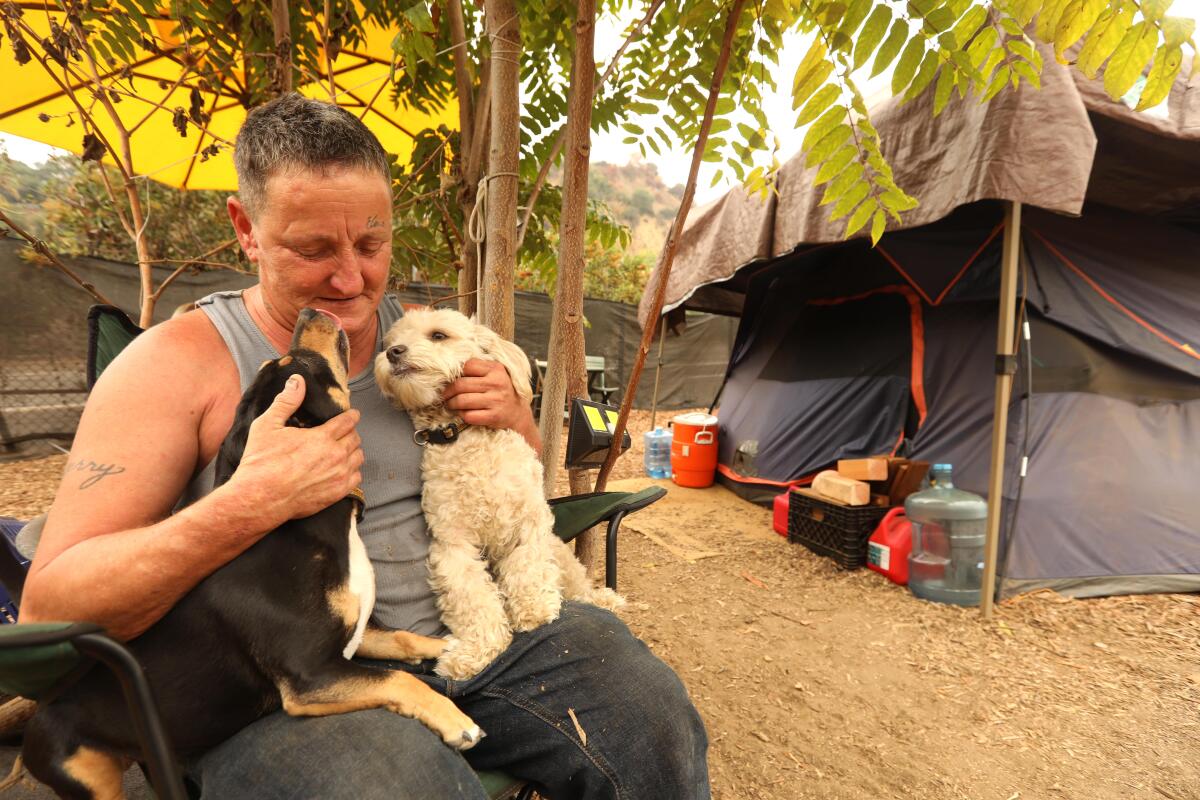
“It was like jail,” said CeCe Smith, who’s had a tough year. She lost her best friend, Don, who lived in the tent, to cancer. She also lost two homeless brothers.
The tent is home, Cece told me, until her Section 8 housing comes through, but even for those lucky enough to get their hands on a voucher, housing is hard to come by. And in basic terms, you can multiply CeCe’s challenge by roughly 40,000 — the number of homeless people in Los Angeles.
Caruso, like Bass, says he can handle the lift.
Soon enough, we shall see.
steve.lopez@latimes.com
More to Read
Sign up for Essential California
The most important California stories and recommendations in your inbox every morning.
You may occasionally receive promotional content from the Los Angeles Times.



